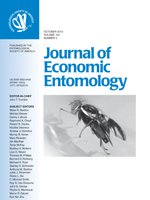Naturally occurring predators of the genus Orius (Heteroptera: Anthocoridae) often suppress agricultural pests in insecticide-free environments. Knowledge of Orius species composition in the field is important because species vary in their biology, prey preference, and ability to suppress pest populations. However, field-collected Orius bugs are often female biased and the identification of Orius females may be unreliable and time consuming. Identification of Orius species based on egg structure may allow easy and nondestructive identification of females, by inspecting the eggs they deposit, and identification of species that reproduce in the field. The aim of the current study was to illustrate how several Mediterranean Orius species could be identified using egg opercula. For this purpose, the structure of the operculum was described for eggs deposited by field-collected females, based on scanning electron microscope images. Then, adult males that developed from these eggs were identified to species by genitalia examination. A detailed description of diagnostic features of the operculum is given for each of four Orius species: O. albidipennis (Reuter), O. niger Wolff, O. laevigatas (Fieber), and O. horvathi (Reuter). Characterizing the structure of egg opercula of additional Orius species would facilitate ecological and biological control research in other parts of the world.
How to translate text using browser tools
1 October 2012
Identification of Orius (Heteroptera: Anthocoridae) Females Based on Egg Operculum Structure
Tarryn Schuldiner-Harpaz,
Moshe Coll
ACCESS THE FULL ARTICLE
It is not available for individual sale.
This article is only available to subscribers.
It is not available for individual sale.
It is not available for individual sale.

Journal of Economic Entomology
Vol. 105 • No. 5
October 2012
Vol. 105 • No. 5
October 2012
biological control
egg structure
identification
operculum
Orius




